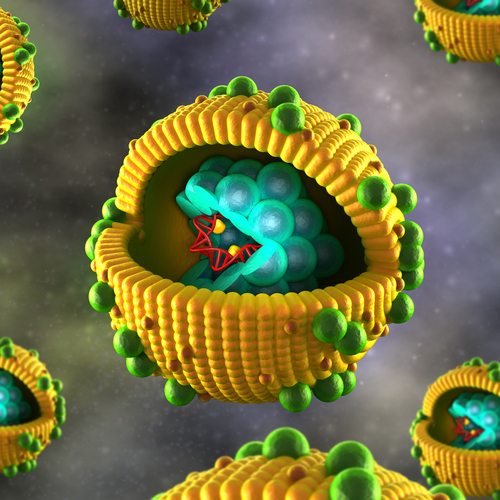How to treat hepatitis C in special populations
M3 Global Newsdesk Mar 30, 2018
HCV infection often occurs with—or causes—other related conditions, such as renal dysfunction (especially in patients on hemodialysis), liver transplantation (LT), and coinfection with human immunodeficiency virus (HIV); unfortunately,the majority of initial DAA clinical trials excluded the special populations, so the efficacy and safety of DAA therapy for these patients remained unclear.

With the advent of direct-acting antivirals (DAAs) in recent years, people infected with hepatitis C virus (HCV) have been able to achieve sustained viral response (SVR) rates greater than 90%. However, HCV infection often occurs with—or causes—other related conditions, such as renal dysfunction (especially in patients on hemodialysis), liver transplantation (LT), and coinfection with human immunodeficiency virus (HIV).
Unfortunately, the majority of initial DAA clinical trials excluded these special populations, so the efficacy and safety of DAA therapy for these patients remained unclear.
“However, several recent studies have shown that combination therapy with interferon-free DAAs offers high efficacy and safety even in special populations,” wrote Goki Suda, MD, PhD, and colleagues, Departments of Gastroenterology and Hepatology, Graduate School of Medicine, Hokkaido University, Hokkaido, Japan, in a recent article published in the Journal of Gastroenterology.
Despite the high efficacy of DAAs, drug-drug interactions remain a concern in patients with comorbidities, Dr. Suda and colleagues noted. So, further research needs to determine possible interactions between DAAs and immunosuppressive drugs (for LT patients) and between DAAs and antiretroviral therapies (ARTs) (for patients with HIV co-infection).
“Furthermore, careful attention should be paid to DAA elimination, especially in HCV-infected patients with severe renal dysfunction,” they added.To that end, Dr. Suda and coauthors reviewed these concerns in HCV treatment for special populations, including patients on hemodialysis, with HIV co-infection, and with recurrent HCV infection after LT.
HCV in patients on hemodialysis
Carefully consider the elimination of DAAs in patients on hemodialysis. “For instance, sofosbuvir, one of the most potent DAAs, is metabolized via the kidney,” Dr. Suda and colleagues advised. “Drug-drug interactions are another cause for concern since hemodialysis patients typically have complex prescriptions.”
Grazoprevir and elbasvir – These drugs are eliminated mostly through the liver, with less than 1% being excreted renally. Pharmacokinetics analysis showed that the area under the blood concentration-time curve was 25% higher for elbasvir and 10% higher for grazoprevir in hemodialysis patients than in those with normal renal function. “Thus, combination therapy with these DAAs could be administered to patients with severe renal dysfunction, including those receiving hemodialysis.” Also, the 12-week SVR rate was up to 98% for this DAA combination with no significant adverse effects.
HCV in patients with HIV co-infection
“Despite decreasing rates of AIDS-related mortality in HIV/HCV co-infected patients, most liver-disease-related deaths are thought to be due to HCV infection,” Dr. Suda and colleagues noted. In addition, liver fibrosis progresses more rapidly in these patients and their risk of developing liver cirrhosis is high. Thus, appropriate HCV treatment is necessary.
“DAA combination therapy is highly effective and very well tolerated in HCV/HIV-co-infected patients, although the risk of drug-drug interactions between DAAs and ARTs should be kept in mind, and the treatment regimen should be chosen with consideration of the coadministered ARTs,” the authors wrote.
Sofosbuvir/ledipasvir – As an example of drug-drug interactions, ledipasvir is known to interact with tenofovir disoproxil fumarate (TDF), elevating the TDF blood concentration. Thus, patients receiving both drugs should be carefully monitored for adverse events, particularly renal dysfunction.
Sofosbuvir/daclatasvir – Twelve-week SVR rates for this treatment were 97% in treatment-naïve patients and 98.1% in treatment-experienced patients.“When applying DAA therapy in patients with HCV/HIV co-infection, collaboration with the HIV treatment specialist should be sought,” Dr. Suda and colleagues advised.
HCV recurrence after liver transplantation
Recurrent HCV infection is “universal” in LT recipients, the researchers noted. Hepatitis C virus replication begins within hours after transplantation, causing rapid progression of liver fibrosis. Within 5 years of transplantation, up to 54% of patients with recurrent HCV infection develop liver cirrhosis; 42% of these patients develop decompensated liver cirrhosis within a year.
“Thus, the need for effective and safe anti-HCV therapy is especially acute in patients with recurrent HCV infection after LT,” Dr. Suda and coauthors wrote.
Although several DAA regimens have demonstrated high efficacy and safety in LT patients with recurrent HCV infection, such treatments should be applied carefully, the researchers advised. Physicians should consider the potential drug-drug interactions between DAAs and immunosuppressants such as cyclosporine and tacrolimus.
“The HCV protease inhibitors simeprevir, grazoprevir, and elbasvir are not recommended for coadministration with cyclosporine,” Dr. Suda and coauthors wrote. “In addition, it is necessary to monitor blood tacrolimus levels during coadministration of simeprevir or grazoprevir. Similarly, coadministration of any major immunosuppressant with paritaprevir/ritonavir/ombitasvir + dasabuvir should only be performed while carefully monitoring the serum levels of immunosuppressant.”
Difficult to treat
“The development of novel DAAs has dramatically changed the landscape of anti-HCV therapy in these special populations, which were historically classified as difficult to treat,” the authors concluded. In such patients, DAA therapies now achieve very high SVR rates (>90%) with fewer and less severe adverse events.
-
Exclusive Write-ups & Webinars by KOLs
-
Daily Quiz by specialty
-
Paid Market Research Surveys
-
Case discussions, News & Journals' summaries